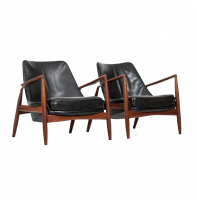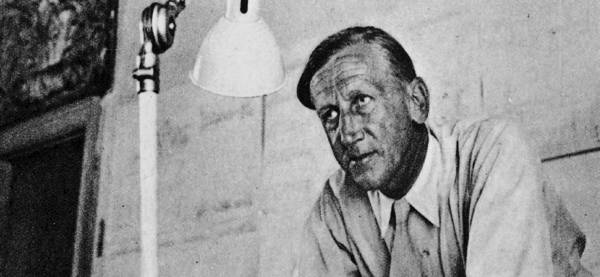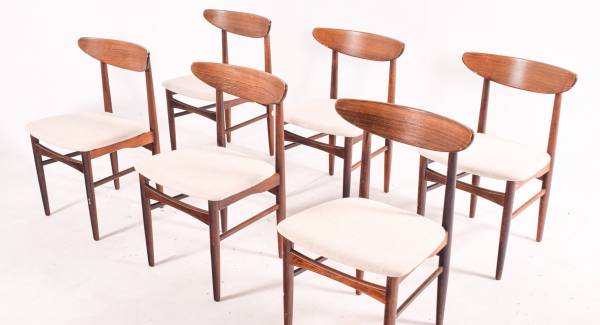Danish Modern is a style of furniture and housewares, from Denmark, associated with the Danish Design movement. The movement gathered momentum in the post-war years and by the 1950s it had moved beyond Scandinavia into the international markets, exporting and licensing designs throughout Europe and the United States of America.
The origin of the movement came about in the 1920s, with Kaare Klint, a furniture designer and architect inspired by the principles of Bauhaus modernism and the Functionalist trend of abandoning ornamentation in favour of form. His furniture designs were carefully researched and prioritised functionality, the proportions of the human body, craftsmanship and quality materials. Klint went on to found a furniture school at the Danish Royal Academy of Fine Arts in 1924 and went on to influence the generation of designers responsible for many of the most iconic pieces associated with the golden age of Danish Modern. He encouraged his students to take an analytical approach towards designing, placing the human body at the centre of the process. The balance of form and function was promoted, along with the high quality craftsmanship and materials associated with traditional Danish cabinet making.
Notable designers in the movement include Poul Henningsen (1894–1967), Mogens Lassen (1901–1987), Arne Jacobsen (1902–1971), Ole Wanscher (1903–1985), Finn Juhl (1912–1989), Børge Mogensen (1914–1972), Hans Wegner (1914–2007), Grete Jalk (1920–2006), Verner Panton (1926–1998), Poul Kjærholm (1929–1980) and Jens Risom (1916–2016).
In the post-war years, Danish designers and architects believed that design could improve people’s quality of life, and when Denmark’s burgeoning middle class began to show an interest, the investment from sales helped the movement to grow in size and scope. Attention was given to creating affordable furniture that was both elegant and functional, and as the demand grew the designers switched from handmade to factory production. Soon Danish Modern’s popularity spread to international markets, exports grew rapidly and from the early 1950s American manufacturers obtained licenses to mass produce Danish designs.
Sales of Danish Modern furniture reached its peak in the late 1960s before mass production using cheaper, lower quality materials took its toll and consumers began to favour other design styles. In the late 1990s, Danish Modern, along with the wider Mid-Century design movement began to experience a revival, one that it is still in full swing today, with collectors again appreciating human centred design, with emphasis on quality material and craftsmanship, and balance of form and function.
All Restoration











